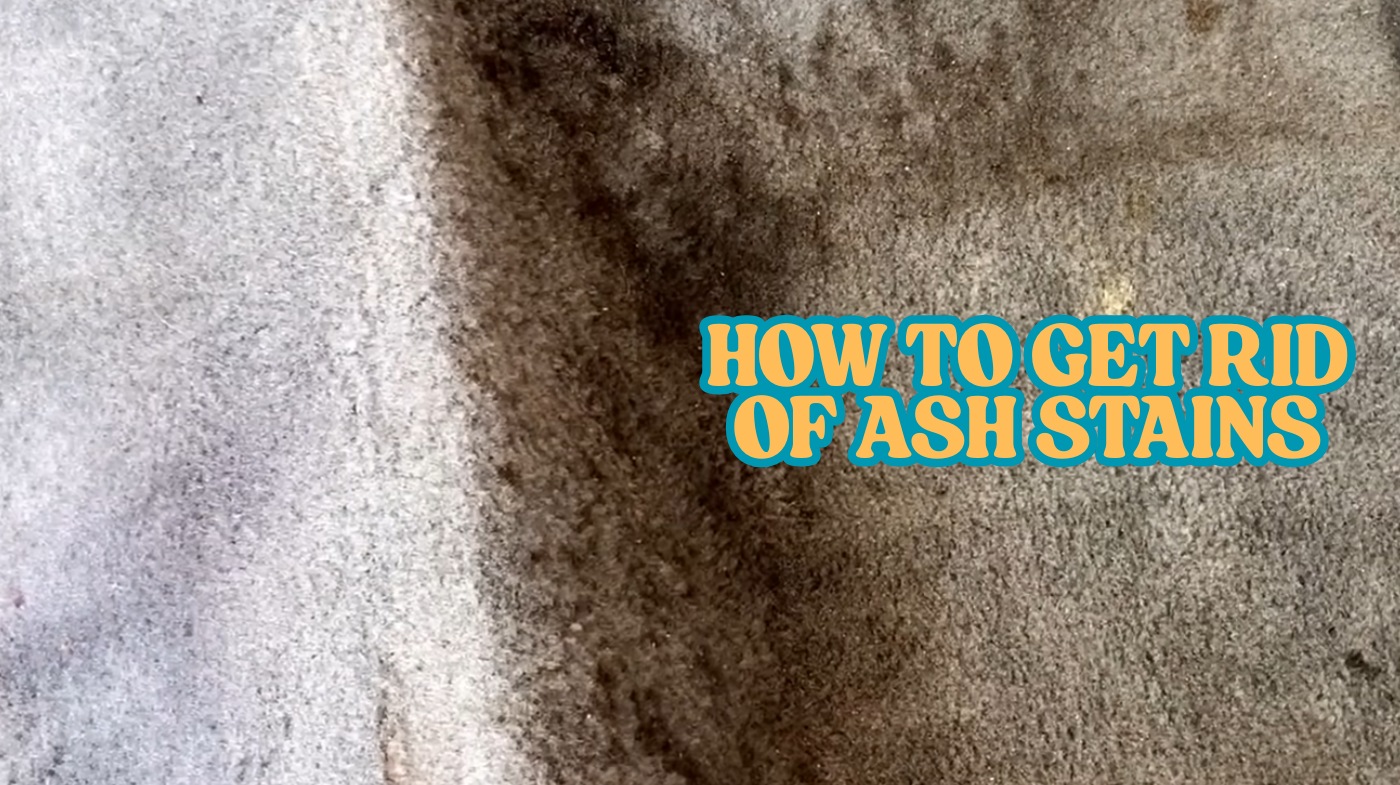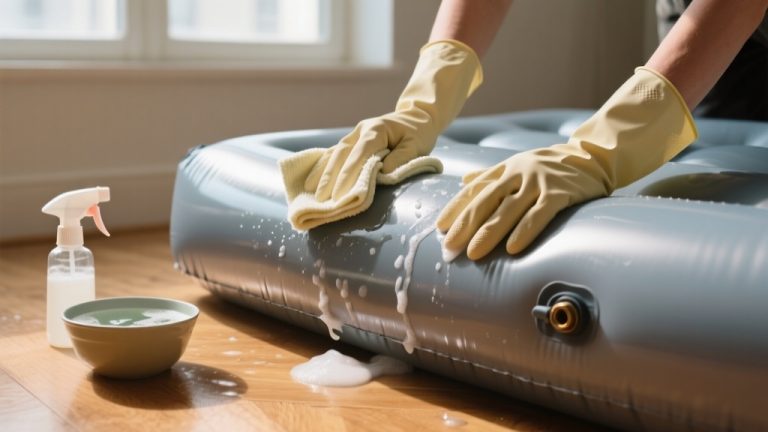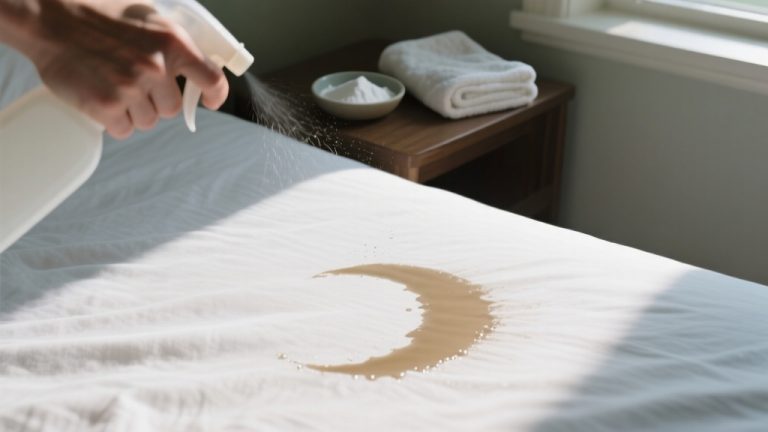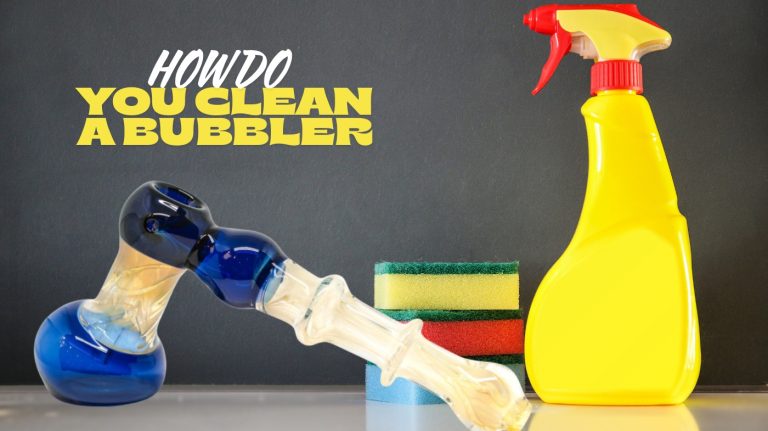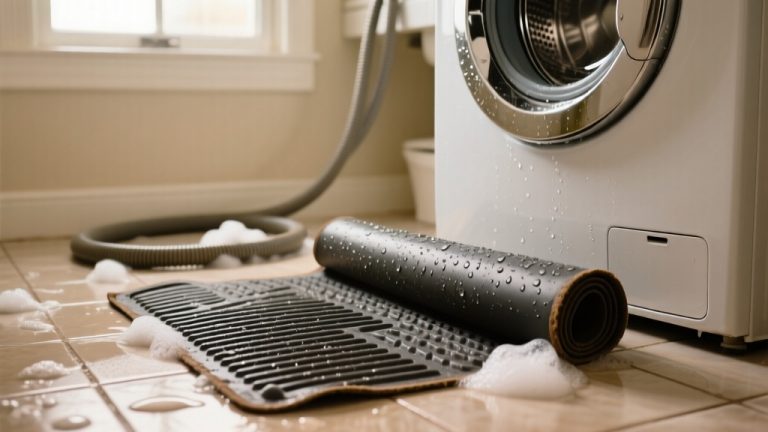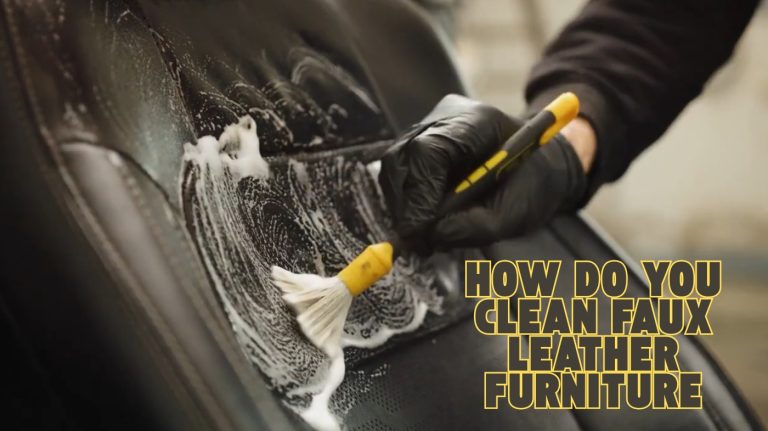How to Get Rid of Ash Stains? Smart Ways for Any Material
To get rid of ash stains, start by removing loose ash with cold water or vacuum suction. Choose a suitable cleaner, mild soap for fabrics, vinegar mixtures for carpets, or oxalic acid for wood. Gently scrub or blot the stained area, then rinse and dry thoroughly.
Always wear protective gear and work in a ventilated space to avoid dust inhalation. Following these steps guarantees effective cleaning, and understanding specific techniques for each material can improve your results even further.
Key Takeaways
- Rinse fabric ash stains with cold water and blot gently before applying any cleaning solution.
- Vacuum loose ash from carpets carefully without rubbing to prevent deeper stain setting.
- Use a vinegar-water solution or mild detergent to scrub and lift ash stains from various surfaces.
- For wood stains, apply oxalic acid cautiously, then clean residue and refinish if necessary.
- Wear protective gear and work in ventilated areas to safely handle ash particles during cleaning.
Preparing Surfaces for Ash Stain Removal
Before you tackle ash stains, you’ll need to prepare each surface carefully to avoid further damage.
For fabrics, rinse ash particles from the back with cold water, dampen without soaking, and identify the fabric type to choose an appropriate method. It is essential to act fast because ash clings to fabric and can quickly work its way into fibers.
On carpets, vacuum loose ash using suction only, dampen gently, and test cleaning solutions on a hidden spot to prevent damage.
Vacuum loose ash gently, dampen the area, and always test cleaners discreetly to protect your carpet.
Concrete requires thorough wetting, scrubbing with scouring powder, and testing chemicals in an inconspicuous area while ensuring ventilation.
For wood, identify the type, assess stain depth, use non-damaging tools, and allow complete drying after cleaning.
On other surfaces, determine the material, wear protective gear, test mild cleaners, and follow manufacturer instructions.
Effective Cleaning Solutions for Ash Stains
When dealing with ash stains, choosing the right cleaning solution is crucial to achieving effective removal without damaging the surface.
You can select from chemical, natural, or specialized products based on your stain type and material sensitivity. Always follow safety instructions and consider eco-friendly options.
Using baking soda, for example, is a proven method that involves sprinkling it over a dampened stained area and letting it sit for about an hour before vacuuming to absorb ash and soot effectively, which makes it an excellent natural cleaning agent for carpets and other materials needing gentle treatment.
This method is also recommended because baking soda should not negatively affect the carpet if used properly.
| Solution Type | Examples | Best Use Case |
|---|---|---|
| Chemical | Baking soda, vinegar, hydrogen peroxide | Tough stains on durable surfaces |
| Natural | Lemon juice, borax, cornstarch | Gentle on fabrics and eco-conscious cleaning |
| Specialized | Fireplace gel cleaners, foam cleaners | Targeted ash and soot removal |
| Enzyme-Based | Enzyme stain removers | Protein-based stains with ash |
| Mild Cleaners | Dish soap | Delicate surfaces requiring gentle care |
Step-by-Step Ash Removal Techniques for Various Materials
Selecting the right cleaning solution sets the foundation for effective ash stain removal, but applying the proper technique tailored to each material guarantees the best results.
Choosing the right cleaner and method for each surface ensures optimal ash stain removal results.
For carpets, start by blotting excess ash, then apply a vinegar-water solution, gently scrub, and rinse. It is important to blot the ash stain instead of rubbing to minimize spreading.
On patio furniture, use a detergent-water mix, wipe the stain, rinse thoroughly, and let it air dry.
For wood, apply oxalic acid directly to the stain, let it dry, clean any residue, and refinish if needed.
Concrete requires scrubbing with scouring powder, applying a poultice to extract stains, rinsing, and repeating as necessary.
Fabrics respond well to blotting, mild detergent application, rinsing, and air drying; consider professional cleaning for stubborn stains.
Essential Tools and Safety Measures for Cleaning Ash
Effective ash removal hinges on using the right tools and following strict safety measures to protect yourself and your surroundings.
You’ll need specialized equipment like ash rakes for grilling appliances and crevice tools to reach tight spots in pellet stoves.
Don’t forget brush tools to clear ash from stove windows and flexible hoses for hard-to-reach areas. The AshVac Cleaning Tool Pkg, weighing only 0.6 lbs, is a lightweight option that enhances maneuverability during cleaning.
Safety is essential: always wear gloves, goggles, and a face mask to shield against heat and ash particles. Work in well-ventilated spaces, and consider fire-resistant clothing to prevent burns.
- Ash rake scraping ash from a Kamado grill
- Gloves gripping a crevice tool inside a pellet stove
- Face mask filtering fine ash dust during cleaning
Post-Cleaning Care and Maintenance for Ash-Stained Areas
Although cleaning removes the bulk of ash stains, proper post-cleaning care is essential to prevent residue from settling and causing lasting damage.
For fabrics, regularly wash with cold water using gentle cycles or hand wash delicate items, applying fabric softeners to maintain texture and prevent re-staining. Inspect fabrics frequently to catch new stains early.
On carpets, vacuum often to remove loose ash, immediately blot fresh spots with a damp cloth, and avoid excessive water to prevent mold; consider professional cleaning for deep stains.
For wood surfaces, apply protective finishes and sealants, condition regularly, and dust to keep ash at bay. Since ash wood has open pores, using a pre-stain wood conditioner before finishing can help achieve a uniform appearance and protect the surface better.
Finally, establish routine cleaning schedules, use covers or mats, and improve ventilation to minimize ash buildup and protect all surfaces over time.
Frequently Asked Questions
Can Ash Stains Cause Permanent Damage to Delicate Fabrics?
Yes, ash stains can cause permanent damage to delicate fabrics if you’re not careful.
The fine ash particles embed easily, especially in sensitive fibers, making stains hard to remove. If you rub the ash in or delay treatment, you risk setting the stain permanently.
To protect your delicate fabric, you need to act quickly, use gentle cleaning methods, and avoid harsh chemicals that might worsen the damage.
How Long Should I Wait After Ash Exposure Before Cleaning?
They say, “A stitch in time saves nine.” You shouldn’t wait long after ash exposure, clean within a few hours to prevent the stain from setting.
Start by rinsing with cold water from the back to avoid embedding ash deeper. Different fabrics might require slight timing adjustments, but prompt action is key.
Avoid heat and test cleaning solutions on a hidden spot first to protect your fabric effectively.
Are There Natural Alternatives to Chemical Cleaning Solutions for Ash?
Yes, you can use natural alternatives instead of chemical cleaners for ash stains. Start by vacuuming loose ash, then apply baking soda to absorb residue and neutralize odors.
Gently dab with a damp sponge to avoid spreading the stain. These methods are safer and eco-friendly, though they might take more effort than chemicals. Always test a small area first to verify the cleaner won’t damage your material.
Can Ash Stains Be Removed From Painted Walls?
Yes, you can remove ash stains from painted walls. Start by gently wiping the area with a dry cleaning sponge to lift loose ash without smearing.
Then, use a mild vinegar and water solution to clean the stain carefully. For tougher spots, try a baking soda paste or a phosphate-free cleaner. After cleaning, inspect the wall and apply a stain-blocking primer before repainting to prevent marks from showing through.
What Is the Best Method to Prevent Ash Stains During Outdoor Events?
Did you know that using protective covers can reduce ash staining by up to 80% during outdoor events?
To prevent ash stains effectively, you should cover vulnerable surfaces like furniture and windows with plastic sheeting.
Regularly dampen ash-prone areas with water to keep particles from becoming airborne. Also, guarantee good ventilation to minimize ash buildup in the air.
A Clean Slate: Say Goodbye to Ash Stains for Good
Now that you know how to tackle ash stains, cleaning them is as straightforward as following a recipe. By preparing the surface properly, choosing the right cleaning solutions, and using the correct tools safely, you’ll restore your materials efficiently.
Remember to care for the area afterward to keep stains from returning. With these steps, removing ash stains becomes a manageable task, leaving your surfaces fresh and spotless like a clean slate.

